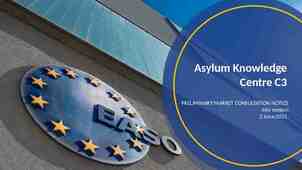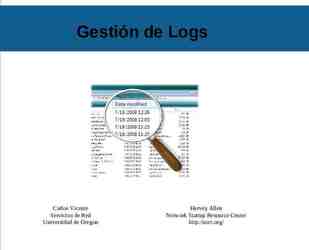Infancy and childhood Adolescence Adulthood and old age
51 Slides4.95 MB
Infancy and childhood Adolescence Adulthood and old age
Specialized study of the changes that occur as an individual matures.
Physical Perceptual Language Cognitive Emotional Social Moral Sexual Identity
Diving reflex
Maturation: internally programmed growth, maturational readiness Learning: experience permanent behavior change
How do we know what infants perceive?
Head turns toward stimulus Eyes fixate Sucking rate increases Agitation
Robert Fantz studied visual preferences
Visual cliff illustrates development of depth perception around 6 months
Language and thought intertwined, symbols Vocabulary vs grammar (chimps can learn signs: Washoe learned 160 by age 5, but no grammar)
Babies who learn sign language communicate earlier (view “Baby Signs”) Is there a Critical Period for language acquisition? Consider the case of “Genie”. (view “Wild Child”)
Section Quiz 3-1
According to Jean Piaget: Intelligence grows as children grow Cognitive development has distinct stages:
Complete Graphic Organizer 3
Need representational thought / schema before object permanence: object exists even if unseen Assimilation: fitting new ideas into existing schema Accomodation: changing schema to incorporate new ideas Egocentric thinking: everyone knows what I know Conservation: amount doesn’t change just because appearance / shape changes Multiple mothers, mirrors, hide & seek, imaginary playmates: evidence of changing thinking ability
Konrad Lorenz Imprinting: immediate bond between mother and offspring
Contact Comfort is critical to survival Harry Harlow View video clip
Strange Situation technique to assess attachment Separation Anxiety aka “making strange” Attachment disorder (view “Dylan”)
Section Quiz 3-2
Diana Baumrind Application activity 3 “Parenting styles” Authoritative aka Democratic Permissive aka Laissez faire
Socialization learning the rules of behavior of your culture Sigmund Freud’s theory of psychosexual development Erik Erikson’s theory of psychosocial development Lawrence Kohlberg’s theory of moral development
Albert Bandura’s social learning theory View video: Bobo doll experiment
Section Quiz 3-3
Asynchrony: uneven growth
Theories of adolescence: Initiation rites Storm and stress (Hall) Cultural (Mead) Developmental tasks (Havighurst): Accept body & acquire masculine or feminine gender role Develop appropriate relations with peers of both sexes Become emotionally independent of parents / adults Expect financial independence Choose, prepare for and enter a vocation Develop cognitive skills & concepts - social competence Understand and achieve socially responsible behavior Prepare for marriage and family Acquire appropriate values
Puberty Sexual maturation (end of childhood) Menarche first menstrual period Spermarche first ejaculation Issues What do you think? Sexual awareness, role of family, religion, government, teen pregnancy, STDs and AIDS Early/late maturing
Section Quiz 4-1
Abstract / hypothetical: formal operations Rationalizations: protect self-esteem from emotions Adolescent problems due to immature and abstract thinking (Elkind): Finding fault with authority Argumentativeness Indecisiveness Apparent hypocrisy Self-consciousness Invulnerability Complete graphic organizer 4
Identity crisis (Erikson) – stage 5: identity vs role confusion (Who am I?) Identity categories (Marcia): Moratorium (considering but no decision) Foreclosure (decision but not their own) Confused (not considering and no decision) Achievement (considered and decided) Complete graphic organizer 4
Section Quiz 4-2
Cliques & conformity Issues: Depression (triggered by breakdown of family unit or loss of loved ones, express anger vs sadness on adults) Delinquency (running away from home, teen pregnancy, alcohol/drug abuse, underachievement at school) Suicide (tripled in past 50 years, troubled teens don’t simply “outgrow problems, warning signs, hotlines) Eating disorders: Anorexia (desire for control) (encourage weight gain & address psychological problems) Bulimia (alienation, desire for social approval) (therapy & antidepressant drugs)
Section Quiz 4-3
Application activity 4 “Gender Role Characteristics” Identity physical & biological makeup Role influenced by gender identity, society, and culture LGBTTS Differences (aggression – women indirect, cognitive ability – women hedge, math and verbal the same but men more confident), stereotypes (overgeneralized) Androgyny (Bem)
Theories: Biological (anatomy, hormones, brain, evolution) Psychoanalytic (identification) Social learning (observation & imitation of models) Cognitive-development (learning from experience, development of gender schema)
Section Quiz 4-4
Marriage (90% marry, 40-60% divorce, happy couples argue constructively) Levinson’s theory of male development (early adult transition, age 30 crisis, settling down, midlife transition 40-45, middle adulthood) Women’s issues (climacteric physical and psychological changes, menopause, “empty nest syndrome”, depression) Erikson’s theory of psychosocial development (stage 7: generativity vs stagnation corresponds with midlife transition)
Section Quiz 5-1
Ageism: prejudice / discrimination against elderly (Application activity 5) Good health in youth - old age Masters & Johnson (ok to keep having sex) Chronic diseases of elderly: heart disease, hypertension, diabetes, arthritis Complete Graphic Organizer 5
Decremental model of aging: progressive physical and mental decline inevitable Decline in nervous system responsible Intelligence: Crystalized: use accumulated knowledge Fluid: solve problems and generate new ideas Senile dementia (memory loss, forgetfulness, disorientation, altered personality, impaired attention) Alzheimer’s disease (most common dementia, neurological disease, destroys ability to think, remember, relate to others, care for self) Complete Graphic Organizer 5
Section Quiz 5-2
Thanatology study of dying and death Kubler-Ross’s Stages of psychological acceptance of death and dying: (denial, anger, bargaining, depression, acceptance) Dying with dignity: Hospice facility to care for special needs Assisted suicide (controversial)
Section Quiz 5-3
























































